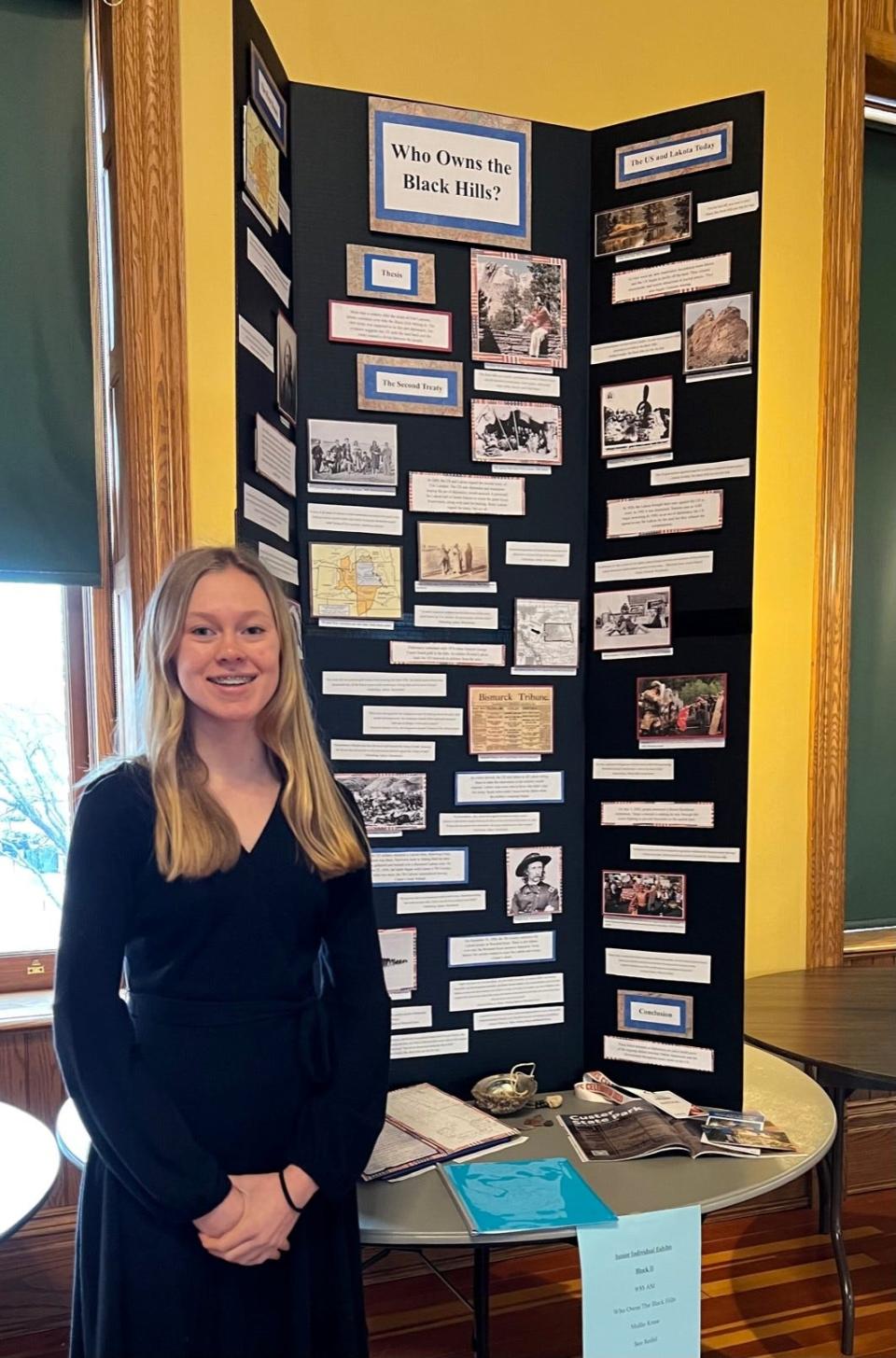Sioux Falls students' history projects shown in virtual showcase at Smithsonian Museums
Two Sioux Falls students are receiving national recognition for their history projects, which will be displayed in virtual showcases with the Smithsonian Museums in Washington D.C.
Roosevelt High School rising sophomore Nathan Arens and Mollie Kruse, who just finished eighth grade at Ben Reifel Middle School and will be a freshman at Washington High School next year, both had projects selected to be shown in virtual showcases at the Smithsonian.
Arens’ 10-minute documentary, “John Brown’s Death and How It Caused the End of Slavery,” is shown in the Smithsonian’s National Museum of African American History and Culture. Kruse’s exhibit, “Who Owns The Black Hills,” is shown in the Smithsonian’s National Museum of American History.

Their projects are part of a National History Day contest, which is a year-long academic program focused on historical research, interpretation and creative expression for those in grades 6-12.
By participating in NHD, students become writers, filmmakers, web designers, playwrights and artists as they create unique contemporary expressions of history. The experience consists of a series of contests at the local and affiliate levels and culminates in an annual national competition in the nation's capital in June.
More education news: 'You aren’t the only trans kid in South Dakota': Transgender youths discuss challenges, acceptance
John Brown’s Death and How It Caused the End of Slavery from Lynne O'Hara on Vimeo.
Arens said he started learning about the subject of his project, John Brown, in his eighth grade social studies class and explains how he was a radical abolitionist in the fight against slavery, and “acted like a martyr.”
He used interviews, articles and research he found online about John Brown, including museum articles and firsthand accounts from John Brown’s lifetime, Arens said, estimating he did a total of 24 hours of research across a couple of months.
“I’ve always been interested in history, so it’s always been fun and fascinating to me,” he said.
More education news: District, state saw improved graduation rates for students in special education in Class of 2021

Kruse’s project ties directly to South Dakota history. She said if she had to answer the title of her project in just a few words, the Black Hills are “likely meant to be Lakota land, but, as of now, it’s the U.S. because of everything they’ve done.”
Her exhibit started as a class project that she “went crazy on, because I’m a big history buff.” She estimated she researched for three months and used databases, resources at the Augustana University library and online articles to put her research together.
More: Here's why South Dakota's program to arm school employees was canceled for the summer
Kruse’s project explains how multiple Native American tribes inhabited the Black Hills before settlers claimed the land, and explains how treaties like the Fort Laramie Treaty of 1851, the 1868 Treaty of Fort Laramie, the battle of Little Bighorn and the Wounded Knee Massacre impacted relationships between Indigenous people and white settlers.
“I want to help show the real reason and really what happened on the Black Hills land,” Kruse says in the video presentation of her exhibit. “I also want to shed light on those innocent people who lost their lives at Wounded Knee. This is just a small piece of the ongoing issues between the U.S. and Native Americans across the U.S.”
Danyelle Cleveland, Kruse’s eighth grade American history teacher at BRMS, said she’s excited for both Kruse and Arens because she’s had students participate in the NHD program for seven years; some have gone to the national level with their projects, but she’s never had a student recognized specifically by an organization in D.C.
“To me, it’s quite the honor,” she said. “To be recognized by a specific organization is incredible. I love that (Kruse) chose a subject area that deserves to receive the attention.”
Cleveland said she appreciated Kruse’s tenacity to not quit when she struggled to find some parts of her research, her drive to keep finding answers, and her ability to ask lots of questions.
This article originally appeared on Sioux Falls Argus Leader: Sioux Falls students' projects shown in virtual Smithsonian showcase

